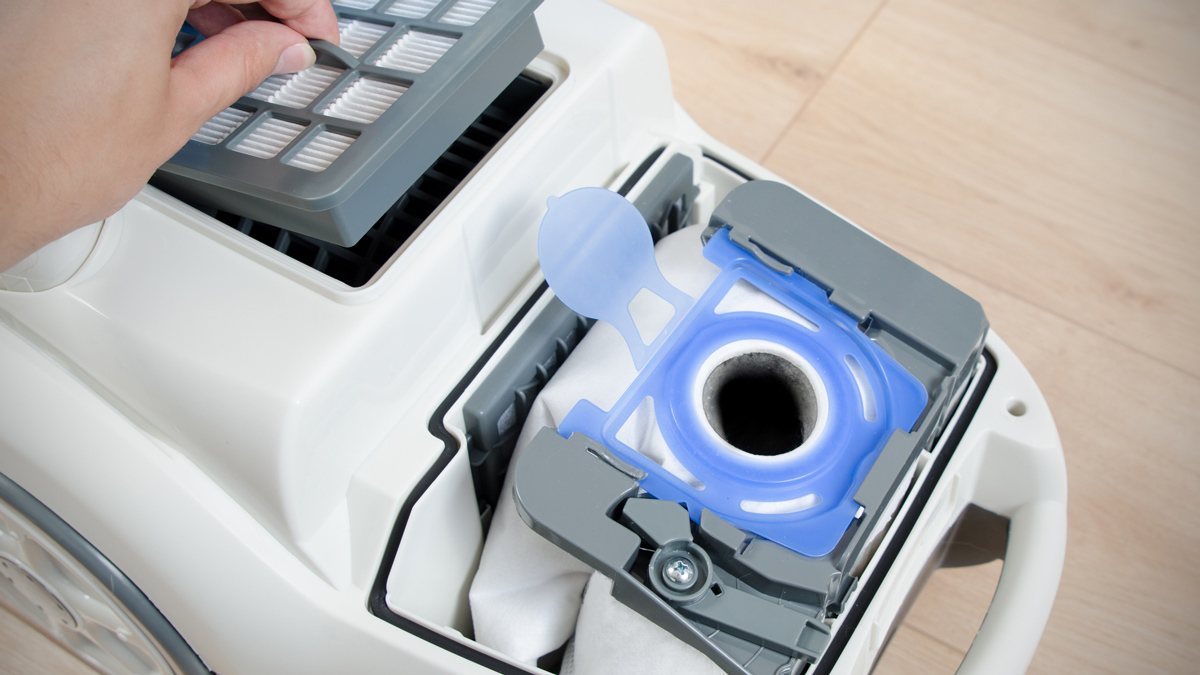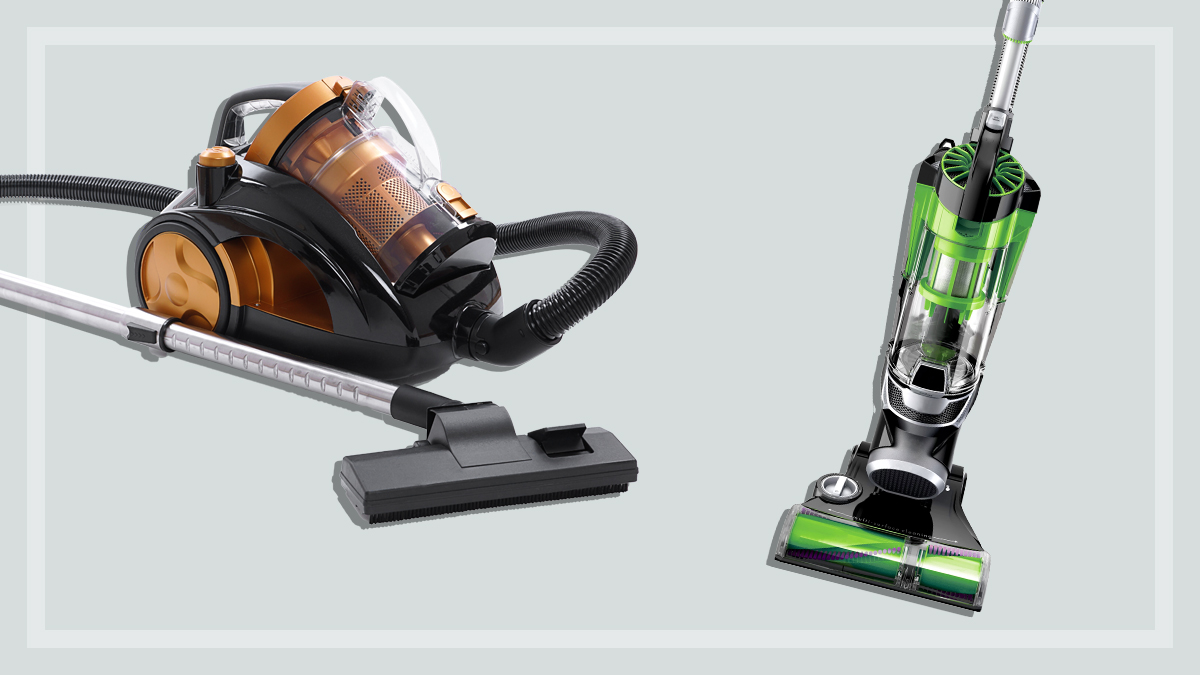Get our independent lab tests, expert reviews and honest advice.
Can a HEPA filter vacuum help with allergies and asthma?

HEPA filters are extremely effective at trapping very fine dust and allergens such as pollen and pet dander. If asthma or allergies are part of your life, here’s why it can be worth looking for a vacuum cleaner that includes HEPA filtration.
On this page:
- What is a HEPA filter?
- Are HEPA filter vacuums more expensive?
- HEPA filter replacement costs
- Which vacuum brands offer HEPA filters?
- Do robot vacs have HEPA filters?
- Other filter types
- More vacuuming tips to solve allergy issues
- Should you get rid of your carpet?
What is a HEPA filter?
HEPA stands for high-efficiency particulate air. These filters are made of a dense weave of fabric that can trap the tiniest of particles – even microbes like bacteria and viruses. These tiny particles, especially fine dust, pollen and pet dander, can trigger allergies and asthma.
Vacuums equipped with HEPA filtration are excellent at catching these invisible irritants. The vacuum’s bag or bin traps the collected pet hair, dirt and larger dust particles, and blows the air back out into the room through the HEPA filter, which makes sure that any really fine particles that escaped the dust bag don’t make it back into the indoor air.
European manufacturers sometimes use the term S-class instead of HEPA on their models, which is a separate (but similar) rating scheme.
HEPA filters trap droppings from dust mites, pollen, mould, pet dander and tobacco particles
There are different standards around the world, but generally to get a HEPA tick of approval, vacuum cleaners must trap at least 99.95% (European standard) or 99.97% (US standard) of a vacuum’s emissions, down to a tiny 0.3 microns in size.
Non-HEPA vacuum filters typically retain more like 96% of the dirt, which may not seem like significantly less, but those few percentage points make a big difference. Non-HEPA vacuums may have claims such as “high-efficiency filters” which can trap larger micro-particles, but fall short of the level of a true HEPA filter.
HEPA filters also trap droppings from dust mites, along with pollen, mould, pet dander and tobacco particles.
Are HEPA filter vacuums more expensive?
Unfortunately, vacuums with HEPA filters do tend to be the more expensive models. However, you can find several barrel and upright models under $300 with HEPA filters.
For stick vacs, about one third of the models we’ve reviewed have HEPA filters, and some of these are also priced under $300.
HEPA filter replacement costs
You’ll need to clean filters regularly, and HEPA filters will eventually clog up and need to be replaced, so check the manufacturer’s instructions before you buy.
Filters may need to be replaced every few months, depending on how often you vacuum and how dusty your home is.
Here are the typical HEPA filter replacement costs for some major brands:
- Dyson: $99
- Miele: $55–59
- Bosch: $30–47
Which vacuum brands offer HEPA filters?
More than half the barrel and upright vacuums in our vacuum cleaner reviews have HEPA filters, and most major vacuum cleaner brands in this category offer at least some models with HEPA filters.
About a third of the models in our stick vacuum reviews include a HEPA filter. Again, most of the major brands offer at least one model with HEPA filtration.
For some of its vacuums, Dyson claims “whole machine HEPA filtration” meaning that the whole unit delivers HEPA-quality filtration, but without using a specific replaceable HEPA filter.
Some models claim to have very high levels of filtration but stop short of claiming full HEPA filtration.
Do barrel/upright vacuums have better HEPA filtration than stick vacuums?
Not necessarily. A HEPA filter is a HEPA filter – it should work regardless of which type of vacuum cleaner it’s in. So there’s no reason a stick vac can’t have just as good HEPA filtration as a corded barrel or upright vacuum cleaner.
That said, a larger and more powerful machine could have more effective airflow through the HEPA filter, and therefore use the filter more efficiently.
But it’s not just about size and power, it’s about the overall design of the machine and the filter itself. For example, a machine could have a good HEPA filter but a poor seal around it, meaning some of the exhaust air doesn’t get filtered at all.
Do robot vacs have HEPA filters?
Most of the robot vacuums we’ve tested are very good at cleaning hard floors – albeit not always in the corners and edges. For a house with mostly hard floors, most of the robot vacuum cleaners we’ve tested will do a reasonable job of keeping the floors clean when run on a daily basis, though a more thorough cleaning with a standard vacuum (or broom) will still be needed occasionally.
But for cleaning carpet, robot vacs are still comparatively poor performers compared to a barrel or upright model, or the better stick vacs.
Nevertheless, if you’re running a robot vac in your home, you may still want the reassurance of HEPA filtration to make sure they’re trapping as much fine dust as possible. So, which robots have a HEPA filter?
- Dyson claims “whole machine” HEPA filtration for the Dyson 360 Vis Nav rather than a specific replaceable HEPA filter.
- Neato and Roborock claim HEPA filtration for several of their models.
- Ecovacs uses “high efficiency” filters in its robot vacs and offers HEPA filter replacements on its website, but doesn’t appear to offer any specific evidence that these are true HEPA filters.
- iRobot’s Roombas similarly have “high efficiency” filters in many models, such as the s9+, j7+ and j7 that trap particles down to 10 microns in size, but the company doesn’t claim that they’re HEPA-level.
If dust inhalation is a concern, it’s worth considering a robot vacuum with automatic dust disposal. These models return to their base station where the bin is automatically emptied into a bag or bin for easy disposal later on. This can help keep your dust handling to a minimum.
Alternatively, look for a robot vac with an on-board bin that we’ve rated as very easy to remove and empty.
Other filter types
Other vacuum cleaner filter types include:
- “High efficiency” or “HEPA-style” filters: These are usually a step below a true HEPA filter. They can typically trap very small particles like a HEPA filter can, but not to the same level of effectiveness. For example, they might trap 98% or 99% of particles, while a true HEPA filter captures at least 99.95%.
- Electrostatic filters: These have a mild static charge to help attract and trap small particles as they pass through the filter. They’re typically equivalent to the “high efficiency” filters mentioned above.
- Double-walled or high filtration vacuum bags: Some bagged vacuum cleaner brands use bags with a high level of filtration to minimise the amount of particles that escape the bag and then pass through the final filter (HEPA or otherwise). Bagless brands such as Dyson claim a similar high level of dust capture using “cyclone” technology. Obviously, the more dust the bag or bin can capture, the better, but a HEPA filter is still an important last line of defence to stop dust escaping back into the indoor air.
More vacuuming tips to solve allergy issues
A HEPA filter vacuum cleaner will definitely help keep your indoor air clear of fine dust and other allergens, but it’s not the full story.
Here are some other important steps that will help.
- Empty the vac’s dust compartment regularly. If it’s a bin, empty it after each use, and if it’s a bag, make sure to replace the bag before it fills up completely. This helps the vacuum cleaner operate at maximum efficiency.
- Beware of flying dust when you empty the dust compartment. Bagged vacuum cleaners may be a better option as they keep all the dust contained for a clean disposal, but replacement bags are an ongoing cost. Alternatively look for a bagless/bin model that we rate as easy to empty, as it’ll be less likely to result in dust flying around. Some stick vacs now come with a base station or dock that empties the vacuum cleaner’s bin into a bag for you.
- Maintain and clean your vacuum cleaner regularly to keep it running efficiently.
- Vacuum thoroughly when cleaning the house – not just floors and rugs, but curtains and furniture too.
- On carpets and rugs, a vacuum with a power or turbo head can beat a lot of dust particles into the air, whether it has a HEPA filter or not, and that can be problematic for a person with asthma. It might be better to leave the job to someone who’s allergy-free.
- If you find yourself having to vacuum very dusty floors or rugs, open the windows, wear a mask, and leave the room for at least 20 minutes once you’re done.
Ducted vacuum cleaner systems
Ducted vacuum systems are a built-in, centralised system with a motor and large dust bag or bin unit, usually located in the basement or garage, and ducts connecting to multiple inlet points at floor level around the home. You plug the vacuum cleaner hose into the inlet and the dirt is sucked away down to the central unit. They’re usually built in at the time the home is constructed, but can be installed in an existing home.
Ducted systems aren’t common, and are more expensive than using a regular vacuum cleaner. They have the advantage of avoiding the need to drag a vacuum cleaner around from room to room, and their large dust bin needs emptying less often.
They also have an advantage when it comes to filtration, because all the suction goes directly to the central unit in the basement or garage, so even if any fine dust escapes the bin, it isn’t going back into the indoor air.
Should you get rid of your carpet?
A carpet-free house is worth considering, as long as you’re prepared to get busy with a wet mop each week. The flooring world is full of carpet alternatives. But if your reason for ripping out the carpet is allergies or asthma, check with your doctor or asthma expert before you go ahead to make sure that your plan makes sense. There’s no point in taking out the carpet if it’s not a major factor in your health issues.
If you’re sticking with carpet, vacuum at least weekly, and thoroughly, with a vacuum cleaner that rates well for dirt removal from carpet in our expert vacuum reviews.
Having your carpets professionally cleaned every 18 months is also helpful, but make sure they’re thoroughly dried afterwards to prevent mould growth.
Regular steam cleaning can also be helpful as it keeps dust mite numbers down, which are one of the biggest indoor irritants for asthmatics.
For more help with asthma, contact Asthma Australia.






